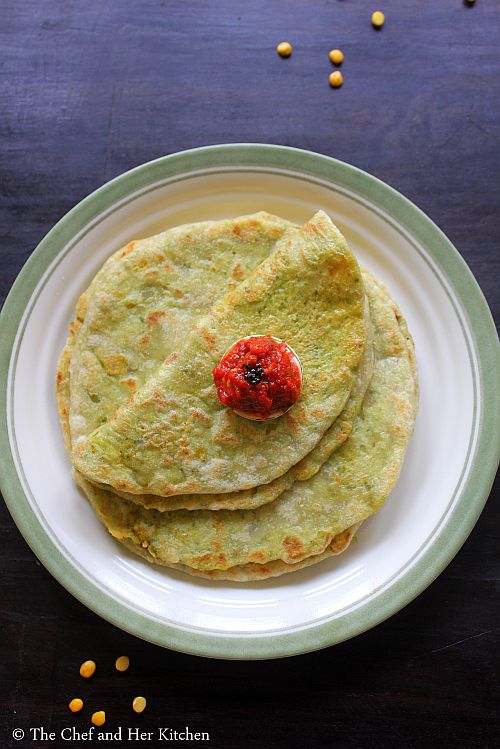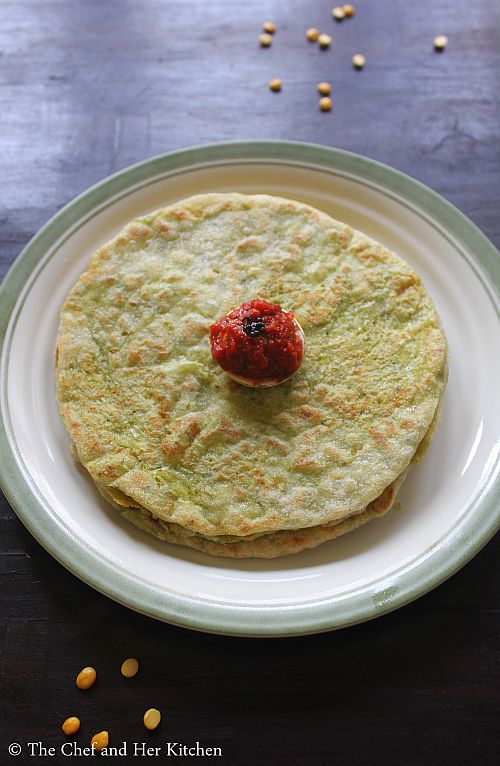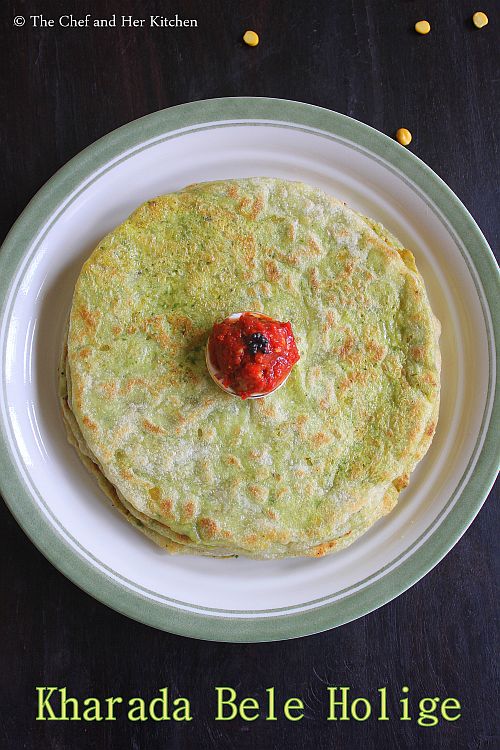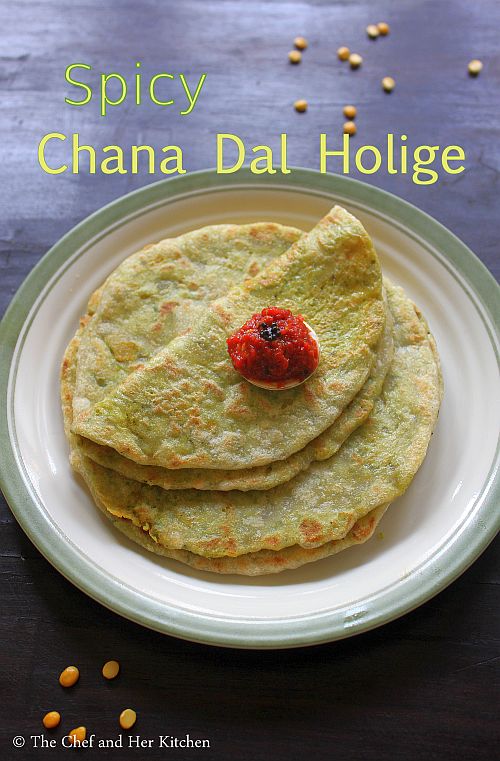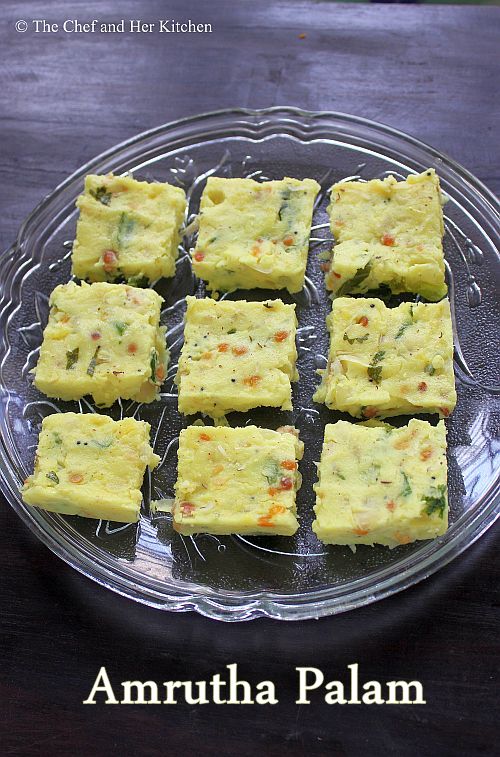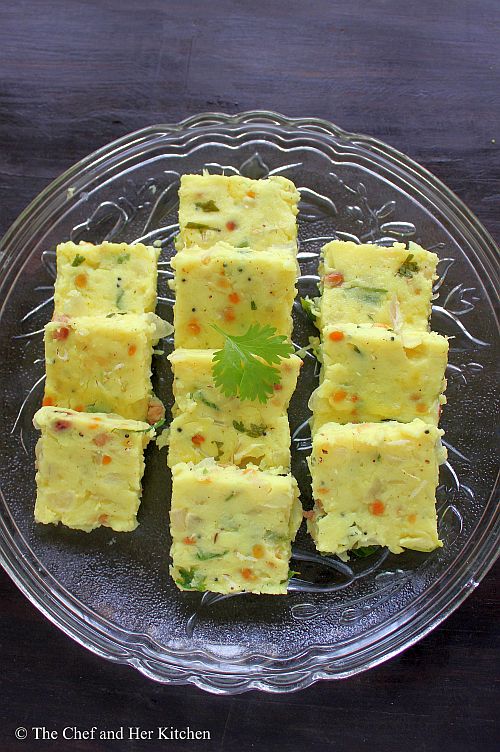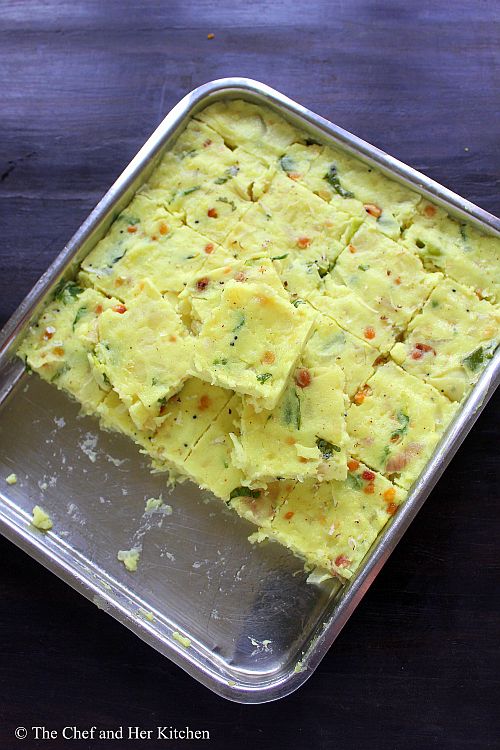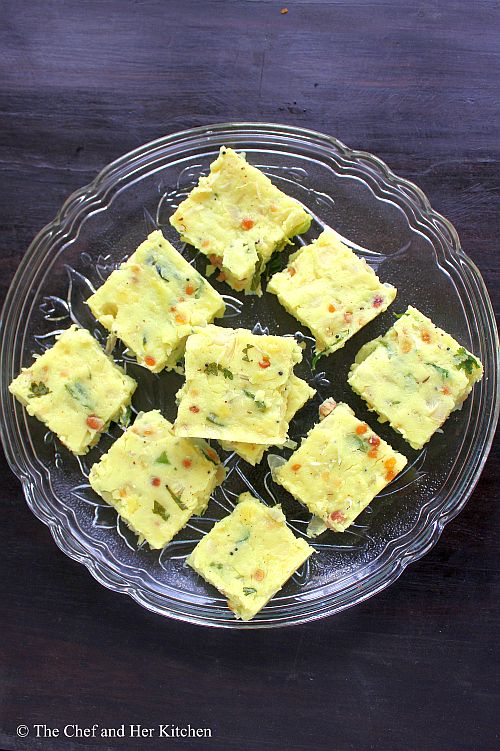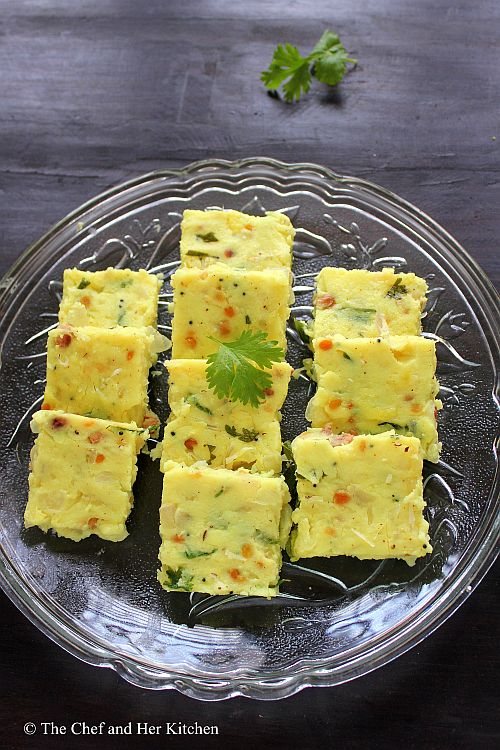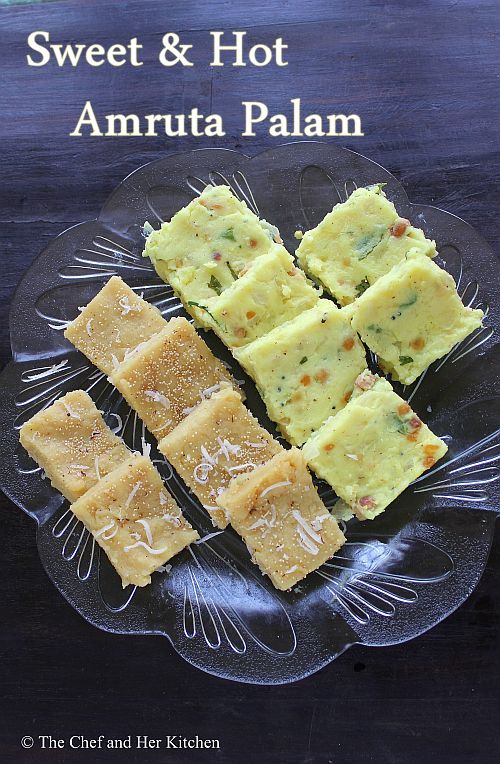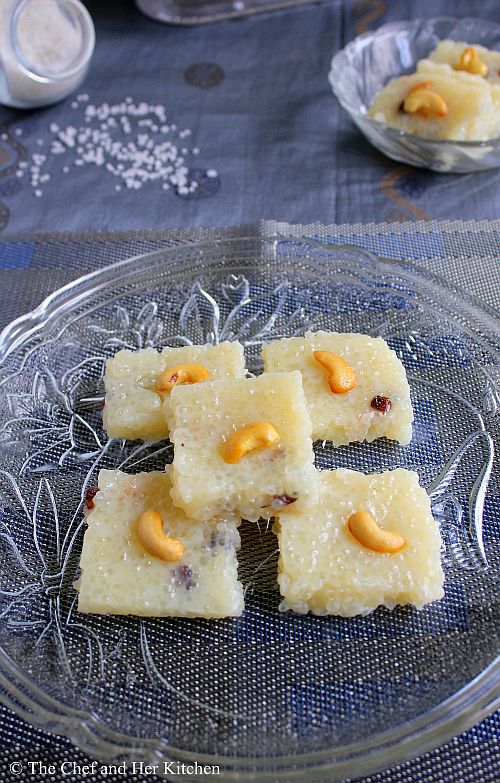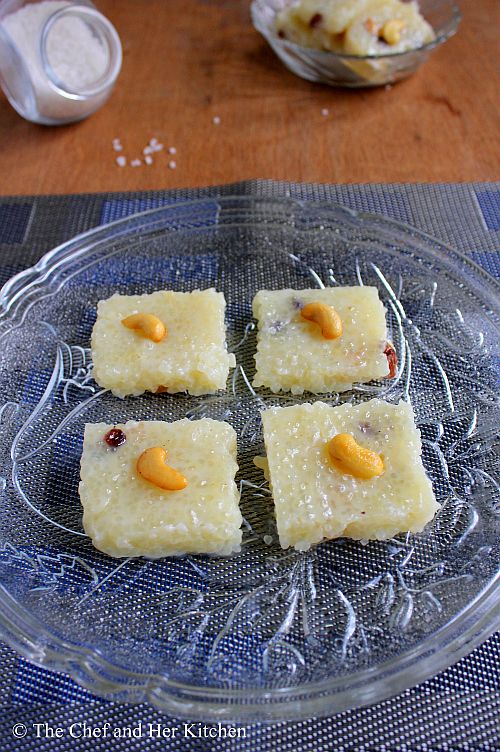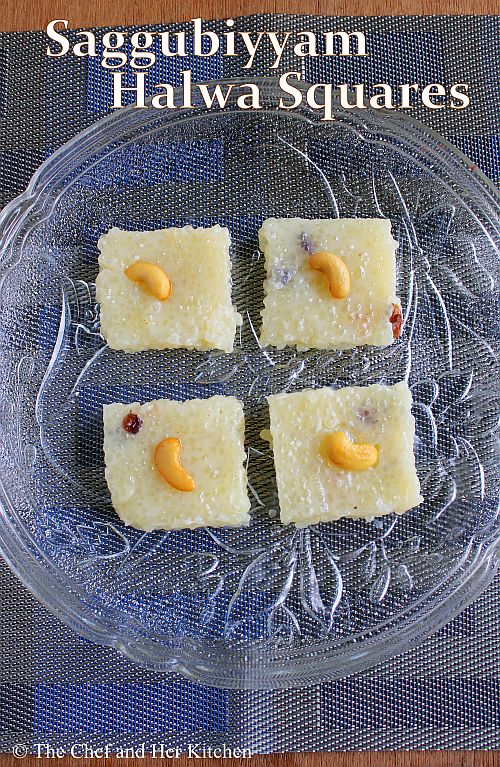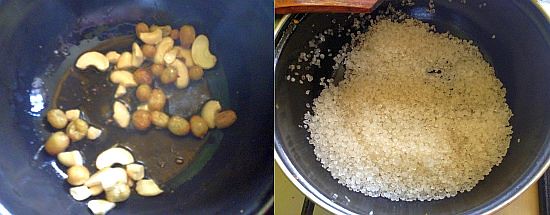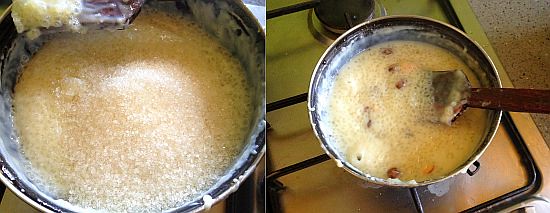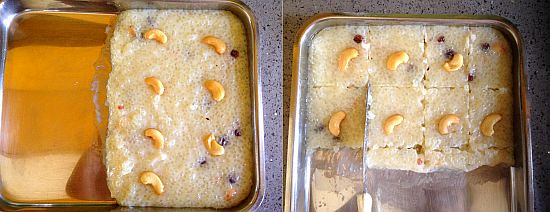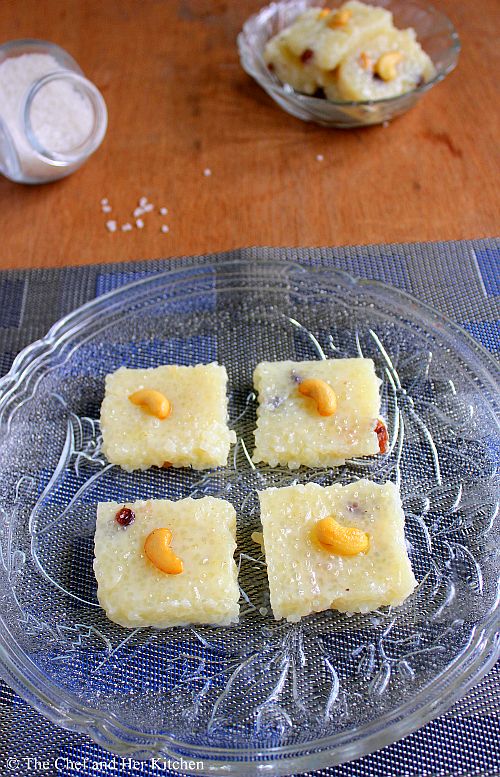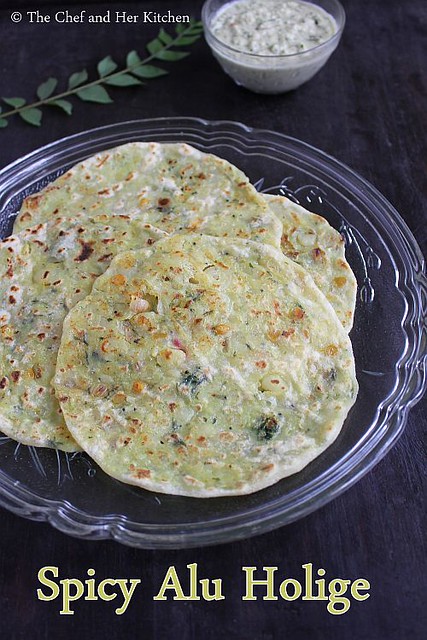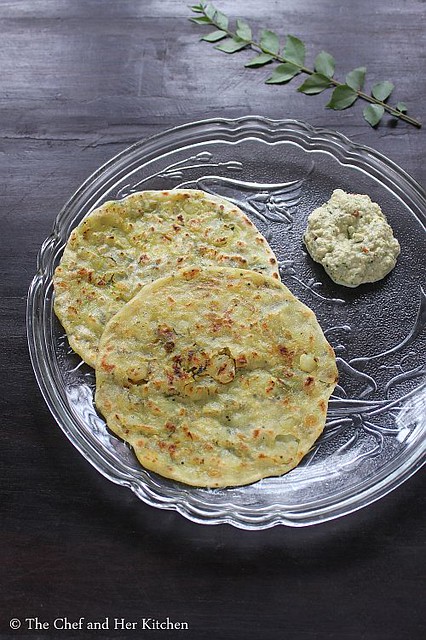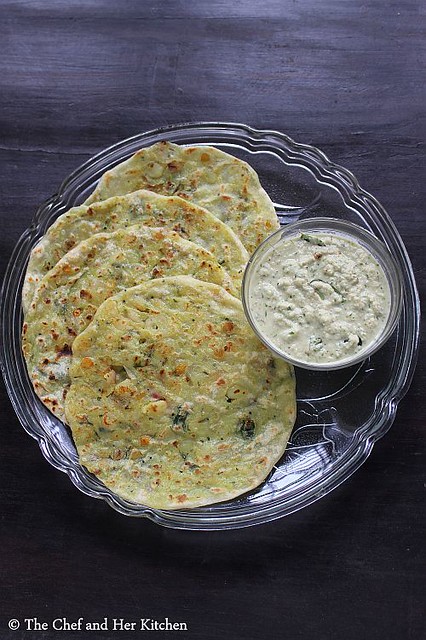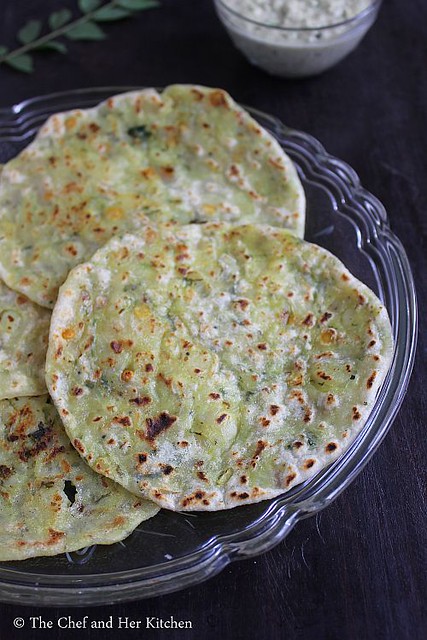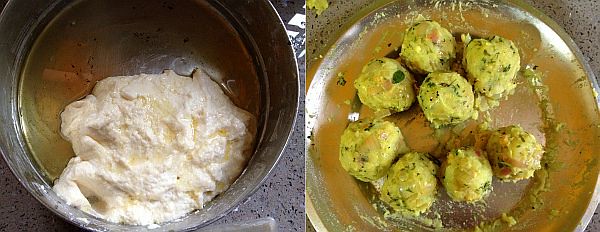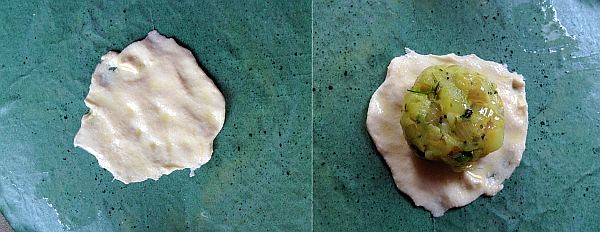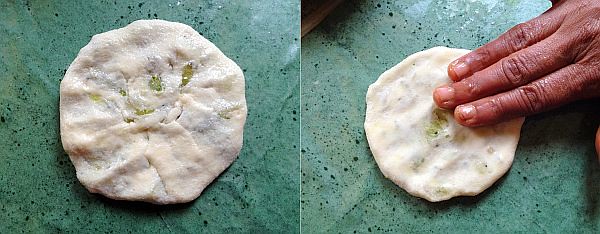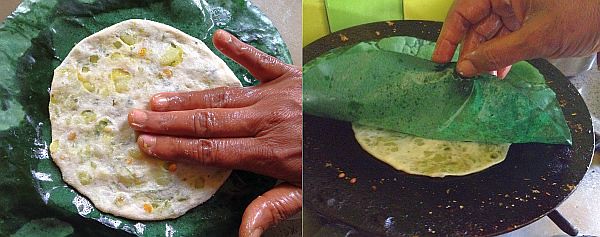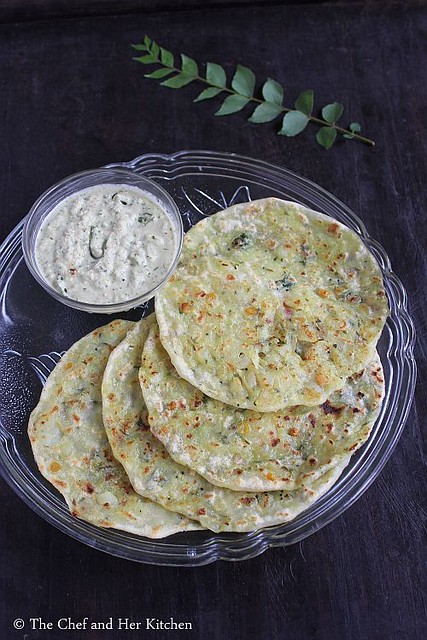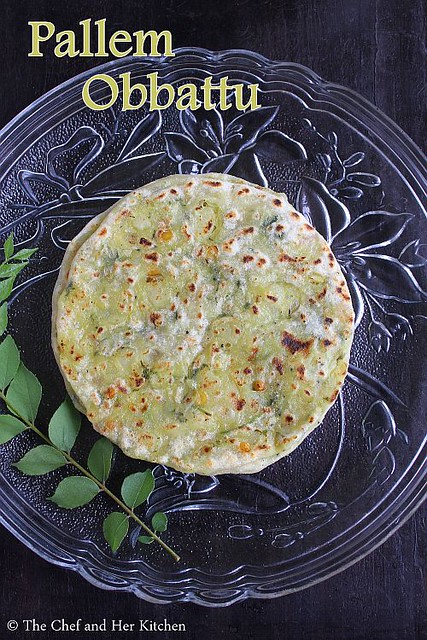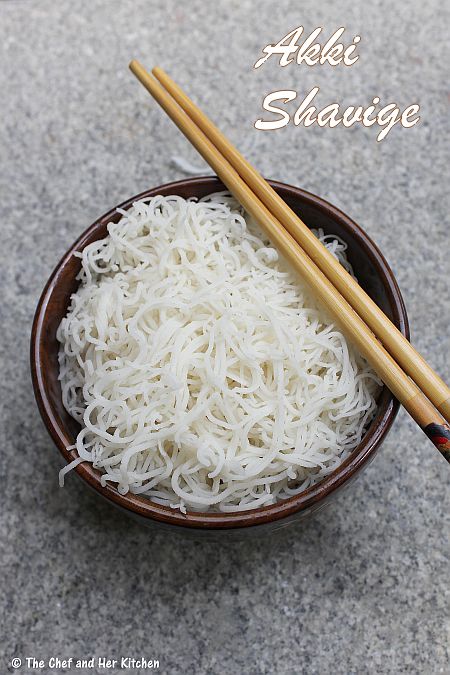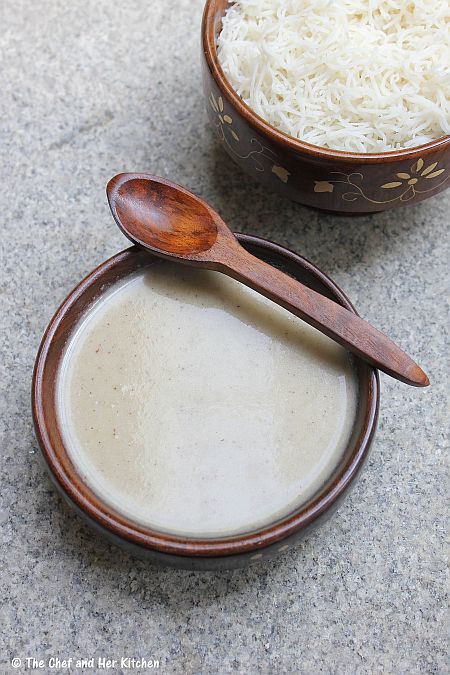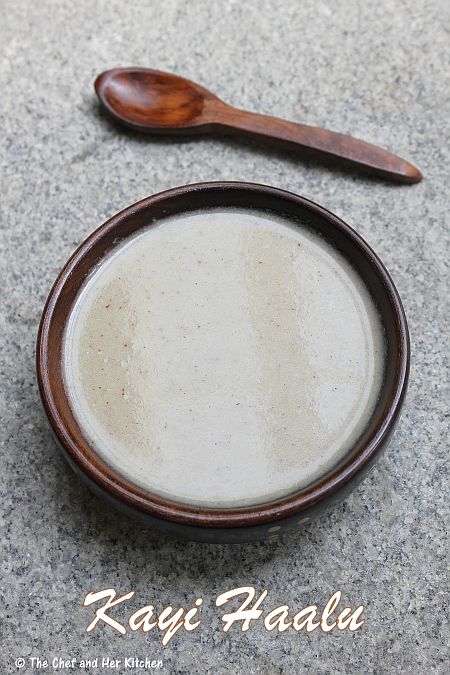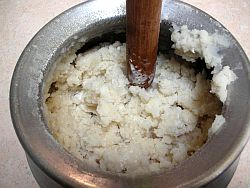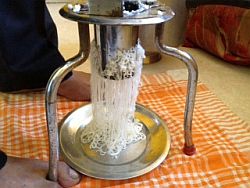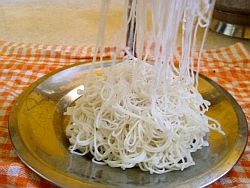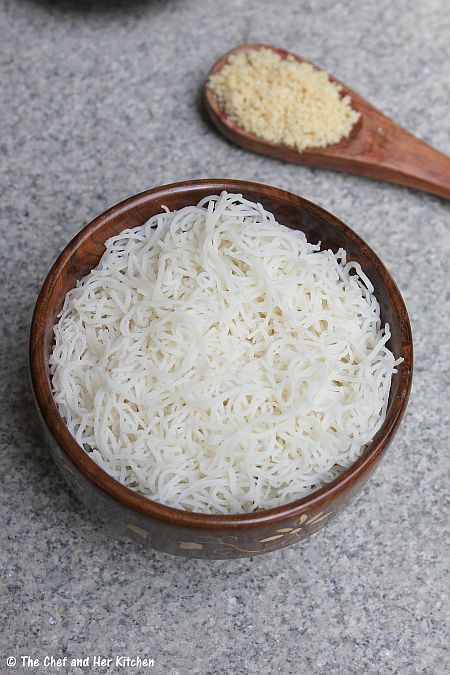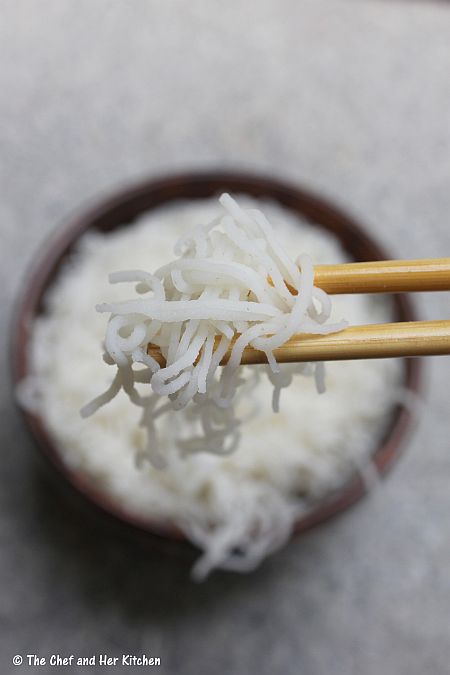Our community is famous for various holige varieties - both the sweet and savoury versions. I have posted lots of sweet holige recipes and also a variety of spicy holige- Palyada Holige(Spicy Alu Poli) in my blog.No festival is complete with out a variety of holige at my mom's place though I do not prepare much as TH is not very fond of it.But I relish these holiges when I visit my mom and she does not wait for a festival to prepares these various holige varieties for me. The most famous and common Holige variety is Bele Holige and Coconut Holige and is commonly prepared in most of the south Indian homes but our community version is bit different from others, check out the recipes to know more about it. Though the sweet Holiges are easily available in the stores,the savoury holiges are not easily available.
Today I am posting a savoury holige recipe which is prepared using chana dal and fresh coconut. The preparation of filling varies from recipe to recipe but the rest of the preparation process is quite similar to the sweet bele holige we prepare.I absolutely love both the savoury versions - Palyada(Alu) Holige and spicy bele(dal) holige and is paired with Coconut chutney,we usually prepare them for breakfast or dinner.
Check out various Holige Recipes in my blog:- Garugu Hollige/ Hollige with rice flour-coconut filling
- Coconut Holige | Kayi Holige
- Haalu Holige | Paala Poori | Paal Poli
- Hoornada Holige/Bele Obbattu
- Pooran (Puran) Poli | Bobbatlu
- Shenga Holige | Groudnut Holige
- Chakkara Rekulu | Crispy Sugar Poli
- Sajjappa | Sojja Appalu | Halwa Poori
- Til Poli | Sesame Holige | Nuvvula Bobbatlu
- Pallem Obbattu | Spicy Alu Holige - savoury holige
Kharada Bele Holige | Spicy Chana Dal Poli | Karam Pappu Bobbatlu | Spicy Obbattu Recipe:
Yields: 8-9 Polis
Prep time: 30 mins | Cooking time: 30 mins | Total time: 1hr + 1 hr resting time
Cuisine: Karnataka -Indian | Category: Breakfast
Ingredients:
Ingredients:
Ghee/oil, to fry poli
for outer layer/dough:
for outer layer/dough:
1 cup fine chiroti rava or Flour(Maida)
a pinch of Salt
a pinch of Salt
1 1/2 tsp ghee, melted
1/3 cup Oil, to soak the dough
Water, to mix the dough
for spicy Dal filling:
for spicy Dal filling:
1 cup Chana dal
1/3 cup grated fresh Coconut
3-4 Green chillies,slitted
1/3 tbsp Coriander leaves,chopped
Salt to taste
1/3 cup grated fresh Coconut
3-4 Green chillies,slitted
1/3 tbsp Coriander leaves,chopped
Salt to taste
Method:
for filling:
- Pressure cook the chana dal for 3 whistles and keep it aside.Drain the water and let the dal cool completely.
- Grind cooked and drained chana dal, grated fresh coconut, coriander leaves, green chillies and salt to a coarse paste.Do not add water while grinding.But if your paste turns liquidy stir the mixture on the stove until it becomes thick.
for outer layer/Dough:
- Mix chiroti rava or flour(maida) with a pinch of salt and ghee and add water to it and knead in to a very smooth dough. The consistency of the dough should be very loose than the regular roti dough, this is the most important step otherwise you will not get softer polis.
- Now using your fist hit the dough for few mins to get the softer dough or lift the dough and drop it hard into the bowl and repeat it until the dough becomes very smooth.
- Now place this dough in a deep vessel and pour oil over it until the dough is completely soaked in oil. Let the dough rest for a minimum of 1 hr and upto 2 hrs. Drain the excess oil and use it for other purpose.
to prepare spicy Dal Poli:
- Cut the holige paper into a round and place it on the rolling stone which we use to roll rotis. Grease holige paper or banana leaf with oil.
- Divide the mixture into 8-10 portions and prepare big lemon sized balls out of it.
- Pinch a small amla sized dough(the amount of dough should be half the quantity of the filling you take) and flatten it a bit using your hands as shown in the pics and place one ball of filling and seal it properly from all the edges like how we do for parathas.Now flatten it slowly with hands to get 5" diameter circle. Alternatively you can roll it like parathas like how we do in between two greased transparent sheets. Adapt the method which ever is convenient for you.
- Now place the holige paper along with the poli(with poli facing down the tawa)on a hot tawa over the low flame.
- Let it sit for 20-30 seconds and now peel the holige paper gently scraping it along the edges using a spatula. See the pics to get a clear understanding of it.
- Now fry it on both sides applying ghee/oil until light golden in color. Pour the ghee/oil over it, do not try to spread ghee over the poli while frying it. Do not fry it for long time, it will make the polis bit hard so quickly remove it from stove when you get to see the brown patches on it.
- Repeat the process for making all polis, smear the holige paper liberally with oil and follow the same procedure.
Serve the spicy Dal poli/karam bobbatlu hot with coconut chutney.
Notes:
Notes:
- The amount of dough should be half the quantity of filling for each poli otherwise the dough would be more and makes the polis bland and hard at the edges as the dough gets accumulated in the edges.
- You can use toor dal instead of chana dal and follow the same recipe.In that case boil the toor dal on stove top until the dal is cooked.Take care that the dal should not be mush, it should hold its shape and also it should be cooked right.
- You can either pat it or roll it like parathas in between two greased polythene sheets.
- If you want a less calorie version, do not soak the dough in oil and instead smear oil on top of the dough and let it rest and then roll the dal polis like we do for parathas by sprinkling some flour. But these are not soft as compared to the ones which are prepared by dunking the dough in oil. But it tastes delicious too.
- I use holige paper or the plastic banana leaf which we get in markets. If you do not get them use a banana leaf instead.

 Vegetables
Vegetables



